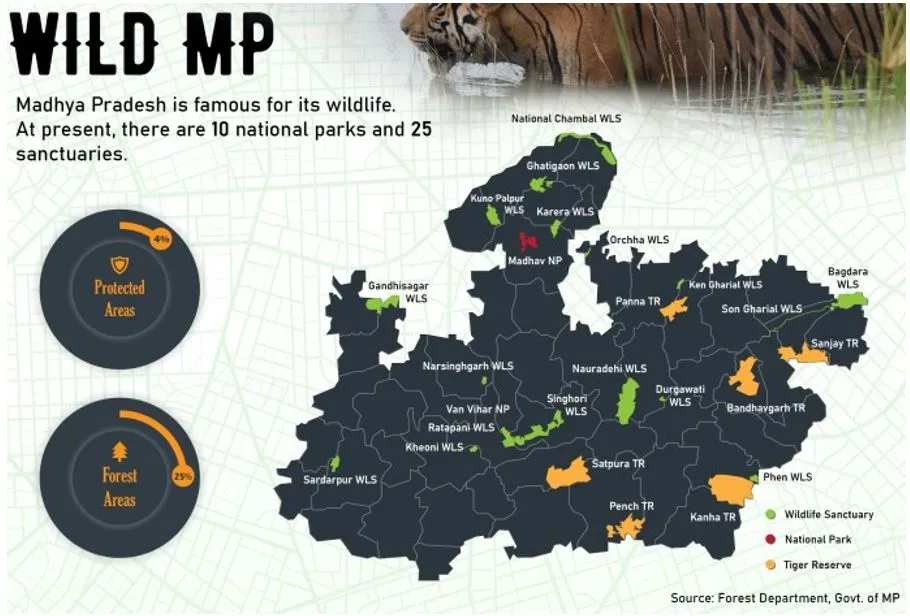

8th February 2025 (10 Topics)
Mains Issues
Context
In a significant move, US President Donald Trump signed an executive order imposing sanctions on the International Criminal Court (ICC) on September 10, 2020. These sanctions are linked to the ICC’s investigations into potential war crimes by American and Israeli officials, specifically in the context of the Gaza conflict. This move has raised concerns about the future of the ICC and its ability to pursue justice for war crimes and crimes against humanity.
What is the International Criminal Court (ICC)?
- The ICC was created in 2002 under the Rome Statute to prosecute individuals for the most serious international crimes, including war crimes, crimes against humanity, genocide, and aggression.
- Its role is to provide justice in cases where national governments are unable or unwilling to prosecute such crimes.
- Membership and Jurisdiction: While the United States and Israel are not members of the ICC, 125 countries have signed the foundational treaty, granting the court jurisdiction over crimes committed on their territory or by their nationals. The ICC steps in when countries fail to address such serious crimes.
- Notable Convictions: The ICC has convicted individuals for war crimes in multiple regions, including:
- Thomas Lubanga (2012), a Congolese warlord sentenced for conscripting child soldiers.
- Bosco Ntaganda (2019), a Congolese warlord convicted for atrocities during ethnic conflicts.
- Dominic Ongwen (2021), a former child soldier turned rebel leader from Uganda convicted for war crimes and crimes against humanity.
Details of US Sanctions Against the ICC
- The Sanctions Executive Order: In 2020, President Trump issued an executive order targeting ICC officials. The sanctions aim to block any US-based financial assets of the court’s staff and prevent them from entering the US. This was primarily in response to the ICC’s investigation into potential war crimes committed by US troops in Afghanistan and its decision to issue arrest warrants for Israeli leaders, including Prime Minister Benjamin Netanyahu.
- Reason for Sanctions: The US government accuses the ICC of being illegitimate and pursuing baseless actions by investigating Israel, an American ally, over alleged war crimes in Gaza.
- The ICC’s issuance of arrest warrants for Netanyahu and others is viewed by the US as a challenge to its sovereignty and an overreach of the court's powers.
- Impact of Sanctions on ICC and Its Investigations: These sanctions could severely hamper the ICC’s ability to function. The ICC’s mandate relies on international cooperation to arrest suspects and ensure fair trials. With these sanctions, the court might face greater difficulty in gaining the necessary support for its investigations.
- Challenges to ICC’s Effectiveness: These sanctions raise questions about the effectiveness of the ICC in delivering global justice. The court has been instrumental in addressing impunity for the most heinous crimes, but without international cooperation, it faces significant challenges in carrying out its work. The US sanctions, along with non-member status, put pressure on the ICC’s ability to enforce its decisions.
Role of the United States and Israel in the ICC
- Non-Membership of the US and Israel: Both the United States and Israel are not members of the ICC. Despite this, the ICC has investigated allegations of war crimes involving their citizens, as in the case of US troops in Afghanistan and Israeli officials. This has led to significant tensions, as the US views the ICC’s authority over its nationals as a violation of sovereignty.
- Impact of US Leadership on the ICC’s Reach: The US has historically opposed the ICC, fearing that it could interfere in its foreign policy and military operations. This has led to attempts to weaken the court’s ability to investigate US actions or those of its allies, particularly Israel. President Trump’s sanctions are seen as part of a broader effort to prevent the court from prosecuting US personnel or holding US allies accountable.


Mains Issues
Context
The Reserve Bank of India (RBI) took a significant step in monetary policy by reducing the repo rate by 25 basis points (bps) to 6.25%, the first repo rate cut in nearly five years. This change is aimed at stimulating economic growth by making borrowing cheaper, which should encourage spending and investment.
What is the Repo Rate and Why Was it Reduced?
- Repo stands for “Re Purchase Option”.
Impacts of repo rate:
|
- It is the rate at which the central bank (Reserve Bank of India) lends to other banks by buying the securities with an agreement that the bank will buy back on a certain date.
- Repo lending is a short-term lending option to meet the liquidity requirements of commercial banks.
- It is a part of the Liquidity Adjustment Facility (LAF) of the RBI.
- A 25 bps reduction in the repo rate means that borrowing for banks becomes cheaper.
- Reason for the Cut: The rate cut is intended to boost economic activity. By making borrowing cheaper, the RBI hopes to encourage both individuals and businesses to increase spending and investment, thus promoting economic growth.
- Inflation and Growth Outlook: With inflation within the RBI’s target range (around 4%), the RBI sees an opportunity to support growth without risking higher inflation. The GDP growth estimate for FY2025-26 has been pegged at 7%, and retail inflation is expected to be 4.2%.
How Will This Impact the Economy?
- Impact on Borrowing Costs: The repo rate cut is expected to lead to a reduction in interest rates for loans across the economy.
- EMIs (Equated Monthly Installments) for home loans, vehicle loans, and personal loans are likely to fall, making borrowing cheaper for consumers.
- Banks will reduce lending rates linked to external benchmarks (such as MCLR) and repo-linked loans. This will directly benefit borrowers by reducing their monthly repayment burden.
- Increased Accessibility to Credit: As borrowing costs decrease, businesses will find it easier to take loans for investment, and consumers will find it more affordable to borrow money for consumption.
- This should lead to an increase in economic activity, as both consumers and businesses become more willing to spend and invest.
- Global Economic Context: The rate cut aligns India with global economic trends, where many central banks have adopted accommodative monetary policies to stimulate growth.
Potential Risks of the Repo Rate Cut
While the rate cut has several positive implications, there are risks:
- Higher Inflation: Lower interest rates could increase the money supply, leading to demand-driven inflation. While inflation is currently within target, the reduced cost of borrowing could push up demand for goods and services, potentially causing price rises.
- Lower Savings Returns: Interest rates on savings accounts and fixed deposits might fall, making it less attractive for individuals to save money.
Projections for GDP Growth and Inflation
- GDP Growth: The Indian economy is expected to grow at 4% in FY 2024-25, a slight slowdown from the previous year’s growth of 8.2%. The growth projection for FY 2025-26 is 6.7%.
- Inflation: Retail inflation is forecast to be 2% in FY 2025-26. The inflation outlook is positive due to falling vegetable prices and softening global prices for edible oils.
- Concerns on Inflation: Although inflation has moderated, concerns remain about its sustainability, especially with the Indian rupee touching 87 against the US dollar.
Fact Box:RBI’s Monetary Policy
Important rates
|
PYQQ. If the RBI decides to adopt an expansionist monetary policy, which of the following would it not do? (2020)
Select the correct answer using the code given below:
Solution: (b) |


Mains Issues
Context
The Union Cabinet approved a new Income-Tax Bill that is expected to be tabled in Parliament. The Bill is designed to simplify the complex tax laws and make them easier to understand and follow for both taxpayers and tax authorities.
Key Objectives of the New Income-Tax Bill
- Simplification: One of the primary aims of the new Bill is to reduce complexity. The government intends to cut the number of sections by 25-30%, making the law more concise and easier to understand. Unnecessary provisions, explanations, and provisos have been removed, and the overall word count has been halved.
- Currently, there are multiple tax regimes applicable in case of various taxpayers (such as companies, individuals, Hindu Undivided Family (HUF) Association of Persons (AOPs) Body of individuals (BOIs), co-operative societies, etc.).
- The new bill will converge to a single tax regime with an objective of reducing overall compliance burden and providing tax certainty
- Clear Language: The Bill focuses on using simpler language. It aims to eliminate redundancy and complex explanations, replacing them with shorter sentences, active voice, and lucid language for better clarity.
- Avoiding Ambiguities: The new law also addresses interpretation issues that have arisen in the past due to unclear language. This should reduce legal disputes and improve compliance.
- New income tax slabs under the bill: The Budget 2025 announcement proposed these income tax slabs under new tax regime:
|
Income Range |
Tax Rate |
|
Rs 0 – Rs 4 lakh |
No Tax |
|
Rs 4 lakh – Rs 8 lakh |
5% |
|
Rs 8 lakh – Rs 12 lakh |
10% |
|
Rs 12 lakh – Rs 16 lakh |
15% |
|
Rs 16 lakh – Rs 20 lakh |
20% |
|
Rs 20 lakh – Rs 24 lakh |
25% |
|
Above Rs 24 lakh |
30% |
- The government has effectively exempted incomes up to Rs 12 lakh by allowing deductions and rebates.
- If passed, the new tax system will take effect from the financial year 2025-26.
- It will apply to taxpayers from the assessment year 2026-27.
Structure of the Bill
- No Excessive Powers for Officials: The Bill maintains that substantive powers—such as the authority to determine income and tax rates—will remain with Parliament. No excessive powers will be given to tax officials.
- Delegation of powers will be limited, with the procedural details shifted into rules, but major tax decisions will still require Parliamentary approval.
- Combining Related Sections: The new Bill aims to combine related sections of the tax code, which should reduce complexity. By avoiding cross-referencing, each section will be more self-contained, making it easier for taxpayers to follow.
- Public Consultation and Stakeholder Input: The tax department plans to put the Bill through a public consultation process to gather feedback from taxpayers, businesses, and experts. This ensures that any ambiguities can be addressed before the law is enacted, reducing the chances of legal challenges in the future.
- Role of the Standing Committee: Once the Bill is tabled in Parliament, it will be referred to the Standing Committee on Finance, which will initiate further consultations.
Expected Outcomes
- Easier Compliance: The new Bill is expected to make tax laws easier to comply with. By reducing complexity and focusing on clarity, taxpayers will find it simpler to understand their obligations.
- More Efficient Tax Administration: With clearer laws and fewer ambiguous provisions, the tax administration will likely become more efficient, resulting in fewer legal disputes and more streamlined tax collection.
- Improved Transparency: The public consultation process and focus on clear language are expected to increase transparency and reduce confusion among taxpayers.


Mains Issues
Context
To ensure the success of the BioE3 Policy, Union Minister Dr. Jitendra Singh urged states to establish ‘BioE3 Cells’ in collaboration with the Centre through the Department of Biotechnology (DBT). Establishing BioE3 Cells is a part of India’s biotechnology revolution, with the aim of realizing Bio-Vision for Viksit Bharat by 2047.
What is BioE3 Policy?
- The BioE3 Policy is a strategic initiative by the Indian government to integrate biotechnology into the nation's economy and environment.
- It aims to build foundational competencies, promote research, and prepare India for a future driven by biotechnology.
- Key Components:
- Biomanufacturing Hubs: Centers for innovation where industry, start-ups, and researchers collaborate on producing bio-products like chemicals, proteins, and enzymes.
- Focus Areas:
- Bio-Based Chemicals and Enzymes: Eco-friendly production methods.
- Functional Foods and Smart Proteins: Nutritional products catering to health needs.
- Precision Biotherapeutics: Personalized medicine and therapies.
- Climate Resilient Agriculture: Agriculture adapted to climate change.
- Carbon Capture and Utilization: Converting CO2 into useful compounds.
- Marine and Space Research: Developing life support systems and exploring marine bio-products.
|
Biomanufacturing is the use of biological organisms or processes in industrial production of goods and materials. |
- The BioE3 Policy is part of the government’s broader efforts to promote biomanufacturing and innovation, including:
- Mission Mausam
- Funding for Space Startups
- National Research Foundation (NRF)
- The BioE3 policy is similar to several other recent government initiatives in the science and technology sector (Artificial Intelligence Mission, the Quantum Mission, and the Green Hydrogen Mission).
What is Biotechnology?
- Biotechnology, the science of manipulating biological organisms and processes to develop desired products or applications, is a vast and diverse field.
- It includes areas such as genomics, genetic engineering, synthetic biology, bioinformatics, gene therapy, etc.
- Benefits of Biotechnology
- Healthcare and Medicine: Biotechnology enables the development of gene therapies and genetic engineering, offering potential cures for genetic disorders.
- Precision medicine, tailored treatments based on an individual's genetic makeup, is another key benefit.
- Agriculture: Genetically modified crops can be designed to withstand pests, diseases, and extreme environmental conditions, leading to increased agricultural productivity.
- Environment and Sustainability:
- Bioremediation techniques use microorganisms to clean up pollutants, including oil spills and industrial waste, making them a valuable tool for environmental conservation.
- Carbon capture technologies using biological processes, such as algae, can help reduce the amount of carbon dioxide in the atmosphere, aiding in climate change mitigation.
- Biodegradable plastics and biofuels produced from renewable biological resources offer eco-friendly alternatives to traditional products.
- Industrial Applications:
- Biomanufacturing processes can replace harmful chemical methods used in industries such as chemicals, textiles, and food production, reducing pollution and environmental impact.
- Bioplastics, produced from renewable resources like corn or sugarcane, can substitute harmful, petroleum-based plastics and help reduce waste and pollution.
- Food Production:
- Animal-free milk and meat can be produced using biotechnological methods like precision fermentation, offering alternatives that are not only ethical but also environmentally sustainable.
- Functional foods and smart proteins that have enhanced nutritional profiles or health benefits can be produced, contributing to better public health.
- Synthetic Biology and Organ Regeneration:
- Synthetic biology allows for the design of new organisms or microorganisms that can perform specialized tasks, such as creating enzymes or proteins with specific properties.
- Organogenesis (growing organs in laboratories) holds promise for organ transplants, potentially reducing dependency on organ donors.
- Healthcare and Medicine: Biotechnology enables the development of gene therapies and genetic engineering, offering potential cures for genetic disorders.
PYQQ1. What are the research and developmental achievements in applied biotechnology? How will these achievements help to uplift the poorer sections of the society? (2021) Q2. How can biotechnology help to improve the living standards of farmers? (2019) Q3. Why is there so much activity in the field of biotechnology in our country? How has this activity benefited the field of bio pharma? (2018) |


Prelims Articles
Context
The Ministry of Rural Development informed the Rajya Sabha that the central government owed Rs 13,718.65 crore to 33 States and Union Territories under MGNREGS. This amount includes Rs 7,072 crore allocated for wage payments.
What is MGNREGS?
- Launched in: 2005
- The Mahatma Gandhi National Rural Employment Guarantee Scheme (MGNREGS) is a centrally sponsored scheme.
- This flagship rural employment initiative guarantees 100 days of wage employment annually to adult members of rural households willing to do unskilled manual labor.
- It aims to improve rural infrastructure and alleviate poverty by providing sustainable livelihoods.
- Nodal Ministry: Ministry of Rural Development
- Implementing Agency: The programme is implemented through Panchayati Raj Institutions.
- The central government’s responsibility under MGNREGS is to directly transfer wages to beneficiaries’ bank accounts.
- In the Union Budget for 2025, the government allocated Rs 86,000 crore for the MGNREGS
- Key Initiatives for Implementing MGNREGA
- GeoMGNREGA: It is a collaboration between MoRD, NRSC, ISRO, and NIC, GeoMGNREGA uses geo-tagging to track assets created under MGNREGA in each Gram Panchayat.
- Janmanrega: Developed by NIC, MoRD, and NRSC, Janmanrega is a multilingual mobile app offering essential services for MGNREGA stakeholders.
- NREGASoft: NREGASoft is a web-based Management Information System (MIS) that records all activities under MGNREGA at multiple levels (central, state, district, block, panchayat).
|
India is home to 6.65 lakh villages, with 2.68 lakh Gram Panchayats and Rural Local Bodies |
PYQQ. Among the following who are eligible to benefit from the “Mahatma Gandhi National Rural Employment Guarantee Act”? (2011) (a) Adult members of only the scheduled caste and scheduled tribe households
Solution: (d) |


Prelims Articles
Context
Mumbai reported its first suspected Guillain-Barré Syndrome (GBS) case.
What is Guillain-Barré Syndrome (GBS)?
- Guillain-Barré Syndrome (GBS) is a rare neurological condition in which the body's immune system mistakenly attacks its own peripheral nervous system.
- The peripheral nervous system consists of nerves that carry signals from the brain and spinal cord to the rest of the body.
- This disorder leads to muscle weakness, tingling sensations, and in severe cases, paralysis.
- Who Can Get Guillain-Barré Syndrome?
- Age and Gender: GBS can affect individuals of any age and sex, but it is most commonly diagnosed in adults, especially those over 50 years old. The immune system's response and the associated risk factors may increase with age.
- Risk Factors: Although GBS can be triggered by a variety of factors, infections such as respiratory or gastrointestinal illnesses (often viral or bacterial) are common triggers. Vaccinations and other immune responses may also occasionally lead to GBS.
- Symptoms
- Initial Symptoms: Weakness and tingling sensations, typically starting in the legs and sometimes extending to the arms and face.
- Progression: The weakness can worsen and lead to paralysis of the legs, arms, or even the facial muscles.
- The progression of symptoms can vary from mild to severe, and in some cases, the paralysis can become life-threatening if it affects breathing muscles.
- Is GBS Recoverable? According to the World Health Organization (WHO), most people affected by GBS, even those with severe symptoms, fully recover over time. However, some individuals may continue to experience mild symptoms, such as weakness or fatigue, for months or even years after recovery.


Prelims Articles
Context
In a latest development, five adult cheetahs—comprising two female cheetahs and three 13-month-old cubs—were released into the wild at Kuno National Park (KNP), Madhya Pradesh. This is the first time that cheetah cubs have been released into the wild in India as part of the project.
About Project Cheetah
- India’s ambitious Project Cheetah is aimed at reintroducing cheetahs into the country after an absence of 70 years.
- The cheetah had become extinct in India by the 1950s.
- The project was launched to restore the species and boost conservation efforts, with Kuno National Park (KNP) in Madhya Pradesh selected as the key site for this initiative.
- Progress:
- 2022: The first batch of 8 cheetahs was translocated from Namibia to Kuno National Park, marking the start of Project Cheetah.
- 2023: A second batch of 12 cheetahs was brought from South Africa to Kuno.
- 2024: Two cheetah cubs were born, increasing the population at Kuno to 26.
- February 2025: Five adult cheetahs, including cubs, were released into the wild, marking a milestone for the project.
- Now, the total number of cheetahs at Kuno National Park is 26—comprising 14 cubs and 12 adults.
Fact Box:About Cheetah:
Kuno National Park
|


Editorials
Context
The digital revolution in rural India, especially following the COVID-19 pandemic, has highlighted both the potential and challenges in using technology for education. While mobile phones, particularly smartphones, have become ubiquitous, challenges like access to devices, quality of education, and integration of advanced technologies such as AI remain significant. The ASER 2024 data highlights these trends, indicating both progress and obstacles in leveraging digital technology to improve education outcomes for underprivileged communities.
Growth of Smartphone Access in Rural India:
- Smartphone Penetration: By 2022, over 74% of rural households had smartphones, which further increased to 84% by 2024, marking a significant growth in access to digital technology.
- Ownership Among Children: The proportion of children aged 14-16 years owning a smartphone has risen from 19% to about 31% within a year, highlighting the increasing digital integration in rural households.
- Challenges for Mothers: Although children’s access to smartphones is high, it is unclear whether mothers of young children have access to their own smartphones, which could aid in supporting their children's learning.
Pandemic's Role in Accelerating Digital Learning:
- Pandemic Learning Shift: During the pandemic, smartphones became vital for transmitting educational materials like worksheets, texts, and videos as substitutes for textbooks, marking a shift toward digital learning in rural areas.
- Sustained Digital Skills: As the pandemic faded, digital skills learned during the crisis continued, with a growing focus on artificial intelligence (AI) in the education sector.
- Need for Investing in Mothers' Education: The education of mothers, especially those with limited schooling, is a key factor in supporting their children’s learning. Educating them could help bridge educational gaps in rural areas.
Technological Challenges and Opportunities for Rural Education:
- Hardware Accessibility: While hardware, including smartphones, is becoming more accessible in rural areas, larger and more sophisticated devices are needed to leverage advanced AI-driven learning tools.
- Language and Translation Tools: Technological advancements have overcome the language barrier, enabling tools for learning in local languages and facilitating translation, making content more accessible.
- Creating Community-Based Learning: The idea of creating a centralized learning hub within villages (such as a ‘school’ with an intelligent device to guide learning) could provide structured education in areas with chaotic or inconsistent school attendance.
Practice Question:
Q: Discuss the role of digital technology in transforming education in rural India. How can challenges like device availability, language barriers, and inconsistent school attendance be addressed to improve learning outcomes? (250 words)


Editorials
Context
The Supreme Court is considering a case in which a non-believing Muslim woman has requested to be governed by the Indian Succession Act (ISA) instead of Sharia law, due to the inequitable inheritance provisions under the latter. This case raises complex issues about the intersection of personal and secular law, individual freedom, and religious practices in India.
Key Legal and Social Implications:
- Freedom to Choose Succession Law: The court ruled that if a non-believing Muslim can choose secular law, non-believers of all faiths should have the same freedom, which could lead to a uniform succession law for all.
- Challenges to Uniform Succession Law: The shift to secular law in inheritance is complicated by existing personal laws, such as Hindu law, which denies inheritance rights to converts, creating a challenge for uniformity.
- Intergenerational Conflicts: Resistance may arise from older generations in religious families, who may oppose the choice of younger non-believers to opt for secular law, especially when it contradicts traditional beliefs about inheritance.
Freedom of Choice vs. Religious Law:
- Clashing Freedoms: The case highlights a conflict between individual freedom to choose secular law and the collective belief systems of religious communities, raising questions about whose freedom should take precedence.
- Equity in Inheritance: The non-believing woman’s case reflects concerns over inequity in inheritance under Sharia law, where women inherit less than men, and her desire for an equitable system under the ISA, which grants women full ownership of property.
- Larger Vision of Equality: The Supreme Court’s ruling reflects a broader vision of democracy, where individuals have the freedom to make choices, but practical and peaceful steps must be taken to reconcile diverse views on equality and freedom in India.
Practice Question:
Q: Discuss the legal and social complexities surrounding the shift from personal law to secular law in matters of inheritance, particularly in the context of a non-believing Muslim woman's plea to be governed by the Indian Succession Act. How can these complexities be addressed in a diverse society like India? (250 words)


Editorials
Context
The Reserve Bank of India's (RBI) Monetary Policy Committee (MPC) has reduced the benchmark repo rate from 6.50% to 6.25% for the first time in five years, signaling a shift in the central bank's approach amid concerns over economic growth. Despite inflation remaining above the RBI’s target, the move aims to support a struggling economy in light of lower growth projections.
Inflation and Growth Trade-off:
- Inflation Moderation: Inflation has moderated to 5.2% in December, but remains above the RBI’s 4% target, necessitating a delicate balancing act between inflation control and stimulating growth.
- Weak Economic Growth: GDP growth projections for 2024-25 have slipped to a four-year low of 6.4%, signaling a slowing economy and highlighting the need for growth-supportive measures.
- Global Economic Uncertainty: Global challenges such as a stronger dollar, stalled disinflation, and uncertain rate cuts in the U.S. are further complicating India’s monetary policy decision-making.
Monetary Policy Adjustments and Forecasts:
- Rate Cut Justification: The MPC decided to cut rates despite ongoing inflationary concerns, anticipating further price moderation, with inflation expected to average 4.2% in 2025-26.
- Policy Alignment with Fiscal Measures: The RBI’s post-Budget stance indicates closer coordination with the government's fiscal policy to achieve a balanced economic response.
- Expectation of Food Inflation Stabilization: The outlook relies on favorable food inflation conditions, including a normal monsoon and a bumper harvest of key vegetables like tomato, onion, and potato.
Future Considerations for MPC:
- Review Schedule Adjustments: With inflation potentially cooling further, the MPC might benefit from adjusting its bi-monthly review schedule to incorporate the latest inflation data.
- Governor’s Influence: The RBI's new Governor, along with an upcoming Deputy Governor appointment, may lead to changes in how the MPC adjusts monetary policy based on evolving data.
- Importance of Data-Driven Policy: A more responsive approach to monetary policy will enhance the RBI’s ability to make timely and informed decisions in response to real-time economic indicators.
Practice Question:
Q: Discuss the role of the Reserve Bank of India’s Monetary Policy Committee in balancing inflation control and economic growth. How does the current economic scenario affect the RBI’s policy stance? (250 words)




